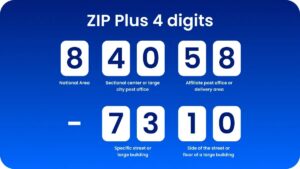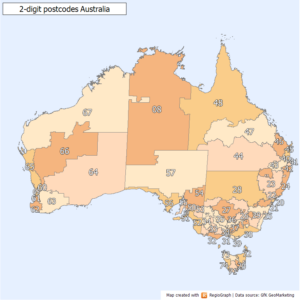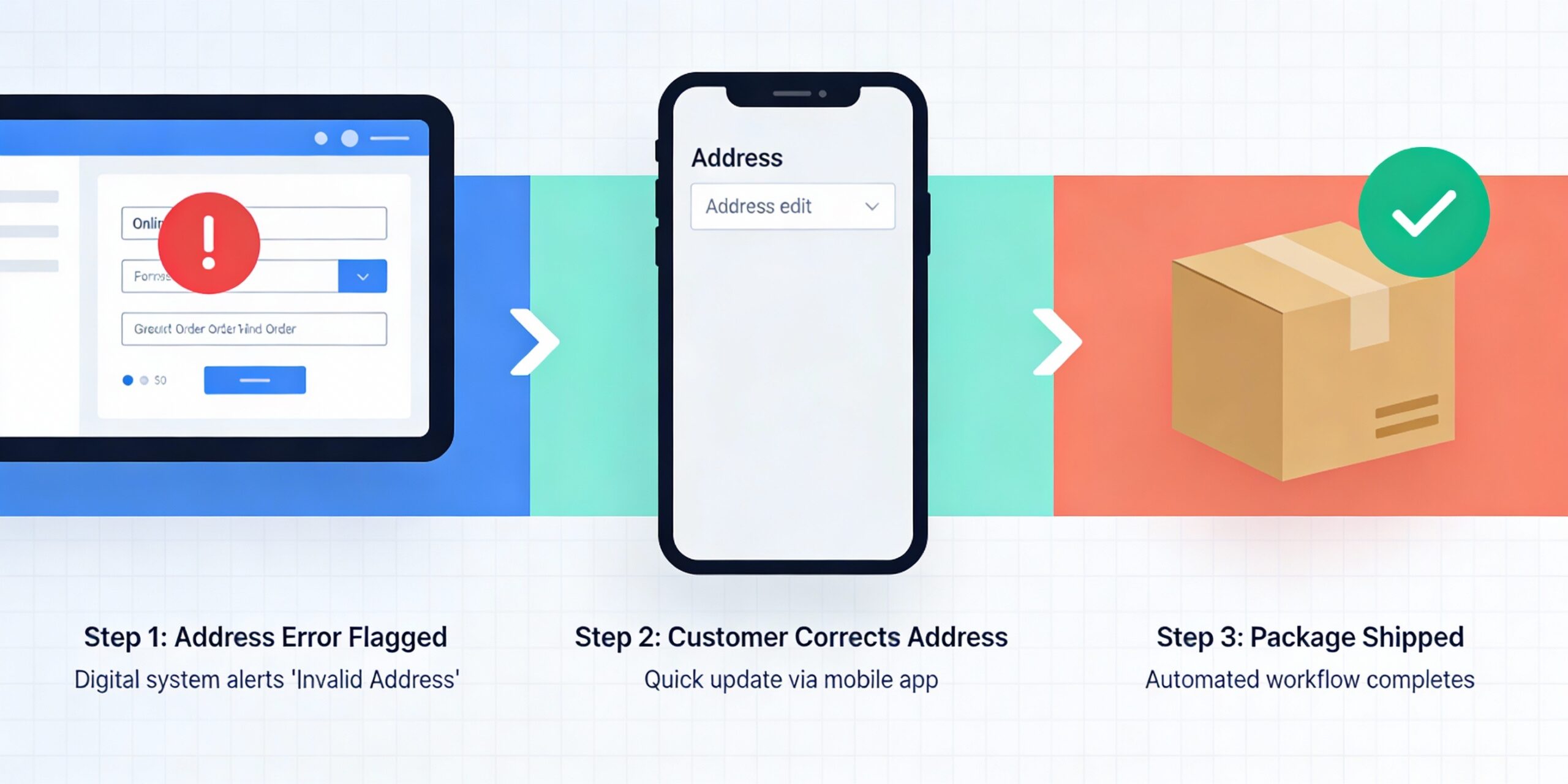Postal codes are more than just strings of alphanumeric characters – they represent entire communities, cities and localities. This resilient geographic identifier carries with it a wealth of data that is invaluable to companies across industries; from fraud detection initiatives to improving customer experiences in the eCommerce space.
Understanding the nuances of postal codes is essential for streamlined address verification and validation. This article dives into how ZIP+4 ties in with your postal code and why it matters to you.
Postal Code Overview
The Importance Of Postal Codes
With the help of postal codes, businesses around the world have access to an efficient global shipping and logistics system. This allows for merchants selling internationally to deliver their goods quickly and securely no matter where they are located in relation to one another: from ground transport across United States borders or air mail spanning east Asia’s widest gulf — business owners can rest assured that their packages will reach customers safely with minimal delays.
Why Postal Codes Simplify Shipping

Behind the scenes of our global postal system, there is a complex communications network keeping packages moving. Sophisticated hardware and software advances have enabled reliable transport from national carriers to customs inspectors – worldwide. While it’s easy for us in industrialized regions to take this infrastructure for granted, those who try to envision life without such systems can fully appreciate their immense importance on daily life today.
From its humble beginnings as a 19th-century postal sorting system for improved mail delivery to the indispensable identifier we rely on today, it’s amazing to think of how far the modern postal code has come. To fully appreciate all that this revolutionary invention can do for us, let’s take a look back at where and why it started.
Evolution Of The Postal Code
Global trade has been an essential part of connecting people around the world since 206 B.C, when the Han Dynasty first opened up The Silk Roads in China to establish a trading network between East and West. Spanning over two millennia, this renowned route built relationships and promoted economic growth by allowing cultures to interact with one another – fostering today’s expansive shipping infrastructure that is fundamental for worldwide logistics operations.
As the world’s societies have grown increasingly interconnected, so too has their need for efficient and reliable delivery methods. Postal codes are essential tools which allow modern carriers to swiftly identify destinations from around the globe—critical in ensuring parcels arrive at their proper destination with ease. Furthermore, postal codes prove invaluable when it comes to identity verification processes; protecting consumers against digital fraudulence of all kinds.
How the Postal Code was Created
At a time when letters were the primary form of communication for most, cities around the world grew faster than postal infrastructure could keep up. To ensure that mail was delivered in an efficient and effective manner, countries like the US created one-of-a-kind Postal Codes – systems so simple yet powerful they revolutionized how post offices handled deliveries. As address verification specialists closely connected to this history of codes across borders, we can’t help but be excited about their origins.
In order to meet the growing demand for postal services, additional post offices were built and more employees hired. Despite these measures, however, a universal dilemma remained: how could one accurately deliver mail to all addresses? To effectively utilize resources and solve this problem once-and-for-all required innovative solutions that went beyond conventional thinking. What followed was an endeavor of innovation in logistics capability – with efficiency being at its core – which ultimately led to successful delivery systems across many countries around the world today.
Looking further back at international history we can see how other countries handled this situation. In the late 1800s, London was at the forefront of innovation in postal service provision. To improve efficiency and streamline letter delivery, they classified their city into ten distinct districts that became known as ‘postal zones’. Numbered for easy identification purposes, these are now considered to be one of earliest examples of postal codes – a system which is used around the world today. By World War One other European countries had established similar systems but it’s all believed to have originated from London’s pioneering tradition in this area.
Since the United States adopted its postal code system in the 1940s, there have been numerous advances to improve and streamline delivery services. While technologies continue to evolve at breakneck speed, our nation’s district numbering system remains a foundational building block for modern postcodes.
ZIP Codes: Origin and Impact on U.S. Mail Delivery
In 1963, Robert A. Moon revolutionized mail delivery in the United States with his invention of the Zoning Improvement Plan (ZIP) code system. With population booms following World War II, this innovation helped to move U.S postal services away from railroads and onto faster transportation methods like trucks and airplanes – resulting in 65% of all American mail relying on ZIP codes by 1967 alone!
Over time it also found even greater usage as a tool for data verification; particularly within banks or insurance companies when setting rates on financial products or issuing lines of credit.
Unfortunately Robert A. Moon passed away in 2001 but will be forever remembered due to such an important contribution that still benefits us today throughout America’s postal systems.
The United States Postal Service utilizes a five-digit numerical system, known as ZIP codes, to efficiently manage mail delivery. Many zip codes exist today for addresses across state lines from the west coast to the east coast (including po boxes), in fact there are 41,683 available today. For even more precise processing and sorting of bulk mailings requiring discounted postal rates, the unique four digit addition – also referred to as add-on or plus four codes – identifies geographic segments within each corresponding area’s first three digits.

This means that when it comes time for your monthly magazine subscription or holiday card orders to be sent out into the world you can rest assured they are being properly sorted with an intelligent barcode generated from their associated ZIP code.
International Mailing Postal Code Names
Throughout the world, countries use postal codes to help identify locations better. However, these are known by different names depending on where you go. Just like an elevator in the United States is called a “lift” elsewhere – other words exist too and can be confusing at times. Now we’ll explore some of those more popular terms used around the globe for this essential form of address identification – everywhere from large cities to country towns.
In the US, the term ZIP code is widely used to refer to postal services (usps), but this generic definition holds true for many English-speaking countries. For instance, Canada calls it “postal codes”, while in The Netherlands they mostly use Postcode and Ireland’s delivery system has recently been updated with Eircode as its new name. Italians have called theirs CAP (Codice di Avviamento Postale) since 1914; Brazil opted for Código de Endereçamento Postal (CEP); and Germany chose the title “Postleitzahl” or PAZ – both of which translate literally into ‘postal code’.
Next, let’s take a look at two common countries we see often passing through the Address Guard platform – Canada and Australia.
Canada Postal Code Format
Canada’s postal codes are an interesting storyteller. Every three characters in a forward sortation area (FSA) code represent something unique – the first letter designates a particular province or territory, while the following digits tell us about its associated local delivery unit. Beyond their traditional purpose of ensuring efficient mail deliveries, Canadian postcodes have also become useful for commercial purposes, similar to that of the United States.

Australia Postal Code Format
Australia’s postal code system is composed of four digits known as “postcodes.” These postcodes are used to identify a specific geographic location within Australia and can be used to mail items both domestically and internationally.

Postcodes are assigned to each street address, locality and state in the country. For example, an address in Melbourne would use the postcode 3000, while an address in Sydney would use the postcode 2000. Postcodes also contain a first number that identifies the state or territory where that postcode resides. For example, all postcodes beginning with 2 are located in New South Wales and all postcodes beginning with 3 are located in Victoria.
Australia’s postal codes are more specific than many other countries’ because they incorporate both numerical and alphabetic elements. A typical Australian post code may look something like this: AMP 5555 SA; this means that it is located in an area called ‘AMP’, which has the 5555 SA (South Australia) postcode assigned to it. In contrast, some countries’ postal codes only contain numeric elements (e.g., United States ZIP Codes). To sum up, Australia’s postal code system is highly efficient for identifying locations within the country due to its combination of both numeric and alphabetic elements.
Postal Code and Their Different Formats
With postal codes being used for efficient and secure delivery of postal mail, it is essential to understand the different formats in which these may be represented. Depending on where a particular code belongs, there are three distinct kinds of symbols that you can expect – numbers from 0-9; alphabets A-Z (of the Latin alphabet) as well as other characters like hyphens or spaces. It must also be noted that varying countries employ varied compositions when forming their respective postal codes.
Postal codes provide an essential aid in navigating around the world – but have you ever wondered which nations take it a step further? Canada, Venezuela, United Kingdom, Swaziland , Netherlands and Ireland are among those that utilize an alphanumeric postal code system. Although traditionally only numbers were used for tracking mail deliveries globally, some countries introduced letters to their format allowing for more complex identification of locations – making these ‘zip’ codes much easier to find.
Postal Code Accuracy
Post codes vary between countries, resulting in varying levels of accuracy. In the US, ZIP+4 code provides unprecedented level of block-level accuracy ensuring that mail with a shared postal code is delivered to homes on the same delivery route by one individual carrier – allowing for enhanced accountability and reliability provided by USPS.
Conclusion
Postal codes are an essential and reliable tool used across countries worldwide. In the US, ZIP Codes offer excellent block-level accuracy when sending postal mail – among the best in the world.
However, even this level of precision isn’t sufficient without a validated set of addresses to ensure successful delivery. That’s why having access to advanced address verification from Address Guard is critical for online stores that ship both in the United States and around the world.
At Address Guard, we are making it easy for brands of all sizes to automate the address verification process in less than 1 minute. Once the app is installed, address rule guidelines can be defined in addition to design customizations to best match the brand. With support for 240+ countries, we are helping brands maximize their shipment success rate by using accurate location data.
Ready to get started? Learn more about our platform and install our Shopify app today.





